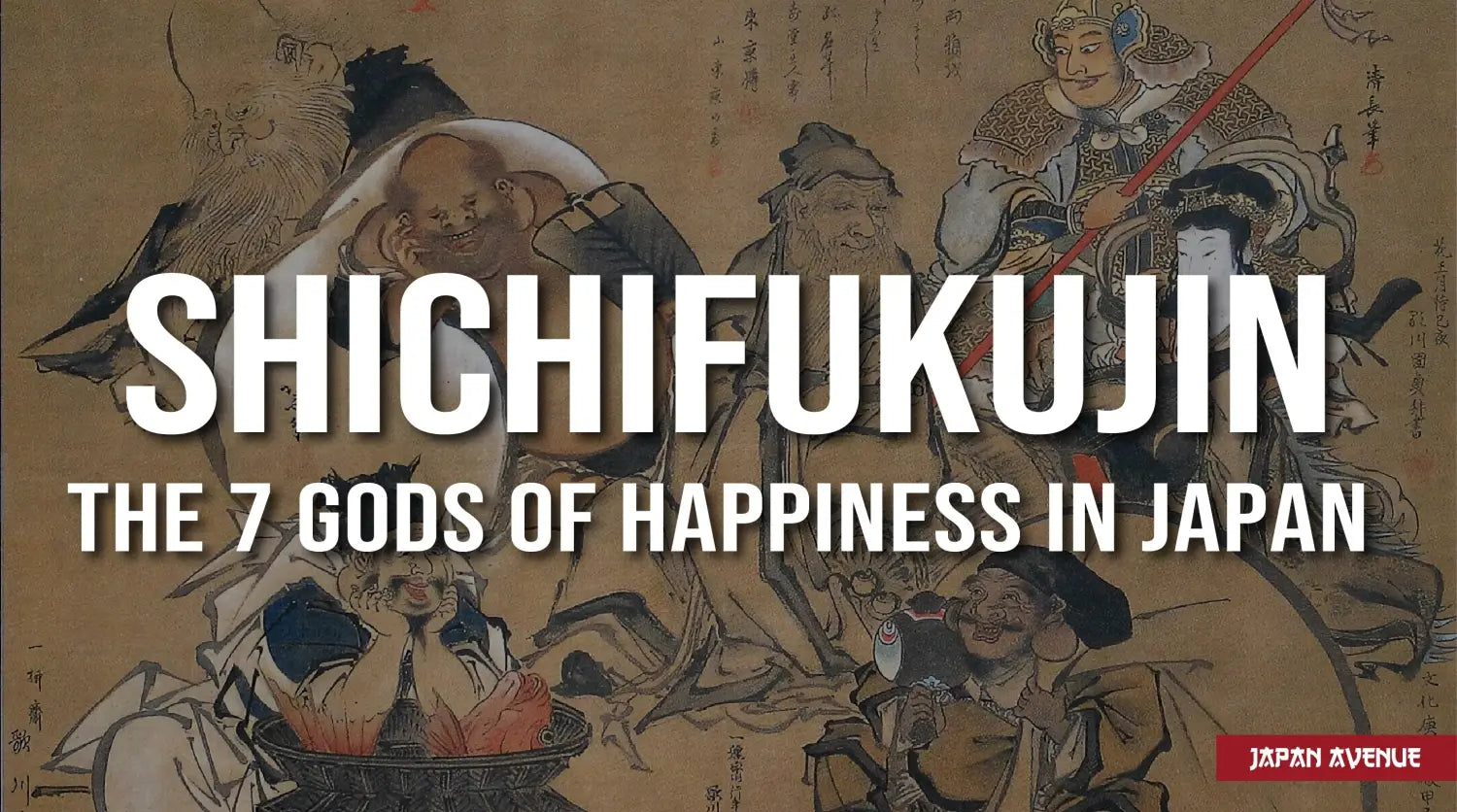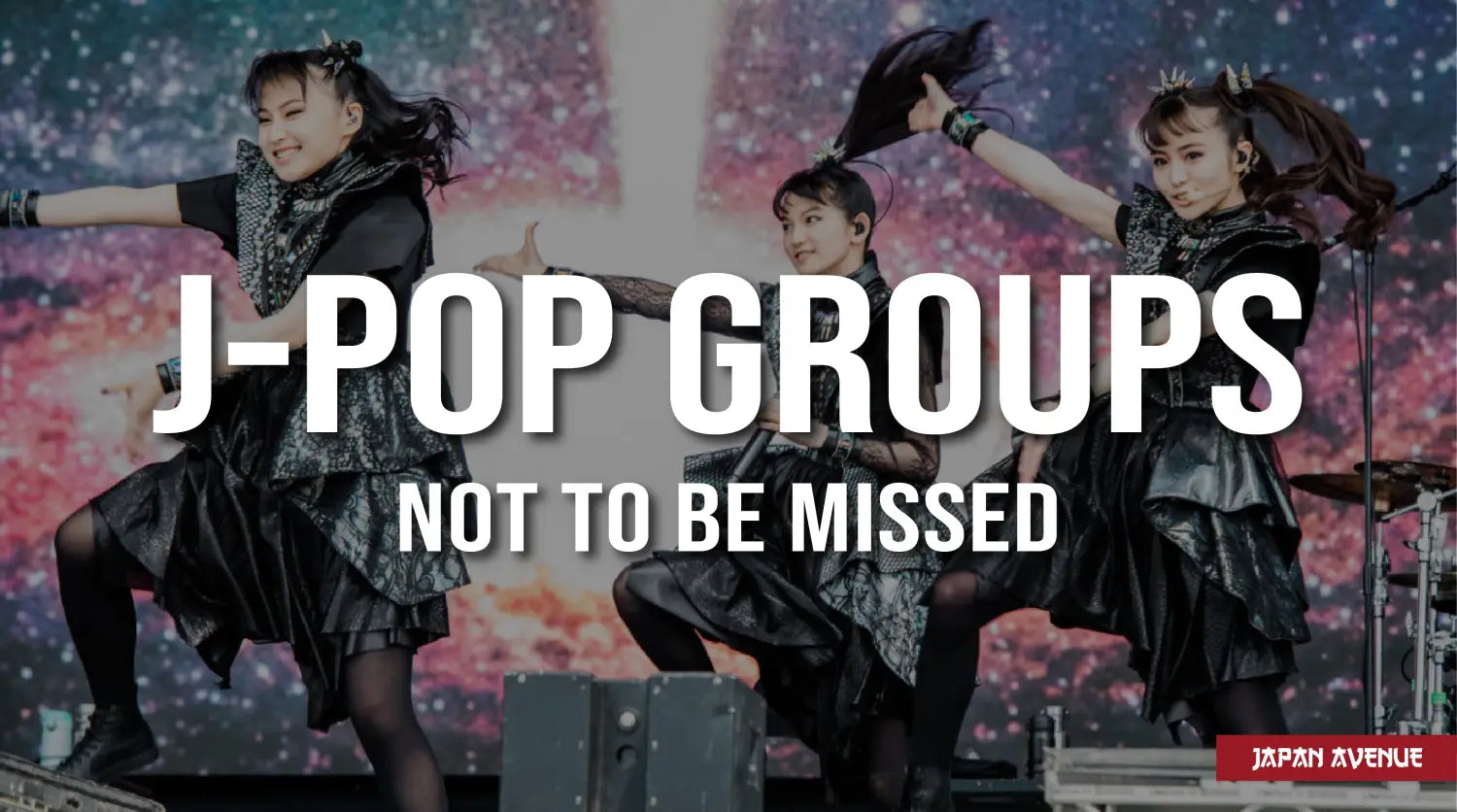In Japan, a well-known New Year tradition consists in visiting the seven lucky gods in order to have luck all year long. Each first weekend of January, families go to temples and shrines to pray to these gods and bring back their stamps: the Shichifukujin pilgrimage.
In Japanese mythology, these deities are said to have traveled on a treasure ship to distribute gifts to those who behaved well.
Learn more about this Japanese legend and invite good luck into your life!
📖 The Legend of Shichifukujin
Every December 31, seven gods of good fortune travel on the Takarabune, the treasure ship, to bring prosperity to those who have been wise. Ebisu, Daikokuten, Benzaiten, Bishamonten, Fukurokuju Hotei and Jurojin... Each of them can be identified by their appearance, accessories or symbolic animals.
On Japanese New Year's Eve, parents place a picture of the famous sailing ship and its divine crew under their children's pillows. This in hope that they will have nice dreams and to bring them luck during the next 12 months.

From left to right: Hotei, Jurōjin, Fukurokuju, Bishamonten, Benzaiten, Daikokuten, Ebisu.
🛕 Origin of the 7 gods of prosperity
Why 7 deities and not 5 or 8? Well, the number 7 is known for bringing good luck in many countries. In Japan, it is used in traditional festivals and rituals: for example, the Tanabata star festival is held on the 7th day of the 7th month of the year; Nanakusa no sekku (the tradition of eating 7 medicinal herbs) is held on January 7. Moreover, Buddhism speaks of 7 reincarnations and we can also mention the 7 virtues of Bushido, (code which governed the Japanese warriors in the samurai era).
The origin of the legend of Shichifukujin is said to have appeared in the Middle Ages in Japan, between the XVIth and XIIth centuries under the Tokugawa shogunate. At that time, people needed prosperity and religion was an important support. This is when the legend of the 7 lucky gods appeared in the Land of the Rising Sun. It is said that by praying to these gods of happiness one would be cleansed of 7 misfortunes and gain 7 happinesses. During the Edo period, the tradition became popular as can be seen from the numerous representations of Shichifukujin in traditional Japanese art.

🍀 The Shichifukujin pilgrimage
The pilgrimage of the seven lucky gods developed with the tradition of Hatsumode, which usually consists of visiting the temple or shrine in one's neighborhood on the first day of the new year. This custom appeared in the Edo period and is supposed to bring luck throughout the year. The Shichifukujin pilgrimage developed in the same spirit. Thus visiting seven deities would guarantee the height of prosperity. Many itineraries are proposed in Japan, especially in the cities of Tokyo. The Shichifukujin Meguri pilgrimage is practiced by many locals, especially in Yanaka district. One of the customs of Shichifukujin is to bring back a stamp from each place of worship. These stamps, called goshuin, are a real talisman and consist of a calligraphy and a stamp attesting to the visit.
⛩ Shichifukujin : Reflection of religious syncretism
Remember, the Japanese are the champions of syncretism. It is thus not surprising that the gods come from several religions such as Buddhism, Hinduism, Shintoism and Taoism. These gods, originating from India, China and Japan, had brought different forms of beliefs along with them.
⛵ Seven gods on a boat

Color woodblock print depicting the Takarabune by Utagawa Hiroshige.
In many representations (paintings, woodblock prints, sculptures, pictures...) we can see a boat floating on the waves with the 7 gods crammed inside. On the sail appears the Chinese character "baku" (獏), an auspicious creature that repels nightmares. We can also notice the presence of symbolic elements such as cranes, turtles or other Japanese good luck charms.
The treasure ship and its crew represent wealth, longevity, luck and happiness. Effectively, shichi (七) refers to the number "7", fuku (福) means "luck" and jin (神) "deity". From the Edo period on, many prints display this mythological scene using natural pigments. More recently, the sailboat of the seven lucky gods is the theme of colorful and childlike illustrations with round-headed men on it.
If the seven gods all bring happiness and felicity, each of them is linked to a profession. Thus, farmers will worship Ebisu and Daikokuten, teachers will honor Jurojin and artists Benzaiten. As for restaurant professionals, they will surely pray to Hotei.
🦹♂ The Seven Lucky Gods, who are they ?
🎣 Ebisu the fisherman god

He is the patron of fishermen and merchants. This patron god of sailors and farmers is highly venerated in Japan. He is often depicted with his sidekick Daikokuten. Wearing a hunter's hat, the deity carries in his hands a fishing rod and a big fish. He is linked to the virtue of honesty. Ebisu would also be the first child of the demigods Izanami and Izanagi, nicknamed "The leech child". It is worth noting that he is the only god of Japanese origin.

💰Daikokuten the god creator of wealth

Incarnation of Shiva, he is the Hindu god of wealth, trade and agriculture. Daikoku is also the protector of cooks. Healthy and smiling, this demon-hunting god wears a cap and a bag full of wisdom. He sits on rice husks and holds a mallet in his hand that he would wave to create wealth.
⚔ Bishamonten the protective warrior god

Originating from China under the name of Tamonten, Bishamonten is an incarnation of Vaishravana, a Hindu god who is the guardian of Dharma (Buddhist law). The Protector King of the North is dressed in armor and holds a spear and a pagoda. Considered the god of war and prosperity, Bishamon is worshipped by warriors to bring them luck in battles.

🎵 Benzaiten the goddess of eloquence and arts

Benzaiten, also called Benten for the close friends 😉, is the goddess of water and the only female deity of the 7 clan. She is the incarnation of the Hindu deity Sarasvati, goddess of arts, music, eloquence, knowledge and beauty. She is accompanied by a white snake and a biwa (Japanese musical instrument).
🪙 Fukurokuju : God of wealth and longevity

This is a Chinese god from Taoism who represents wisdom, virility, fortune and longevity. Fukurokujin was a Chinese philosopher during his lifetime. He is described as an old bald man with a long white beard and an elongated skull. He carries a rod of wisdom and is sometimes accompanied by a crane or a turtle.
🤓 Jurojin : god of longevity and wisdom

This is the oldest among the 7 gods. Patron of teachers, this Taoist deity looks like Fukurokuju with his long beard and bald head. It is said that they share the same body. This scholar holds a stick that contains the secrets of longevity. He is often accompanied by a deer, or other animal of good omen.
😁 Hotei: generosity and abundance

Hotei also called the Laughing Buddha is said to be the incarnation of Maitraya or Buddha of the future. This old Chinese monk who really existed in the 10th century also joined the Taoist and Shinto religion. He is the god of good health, happiness, abundance and trade. Hotei is very popular in Asia and in the West where he is frequently found in restaurants. Represented by a fat, bald, paunchy and smiling man, Hotei attracts prosperity and holds a bag filled with treasure that never runs out. It is said that rubbing his belly brings good luck. Did you ever try ?



